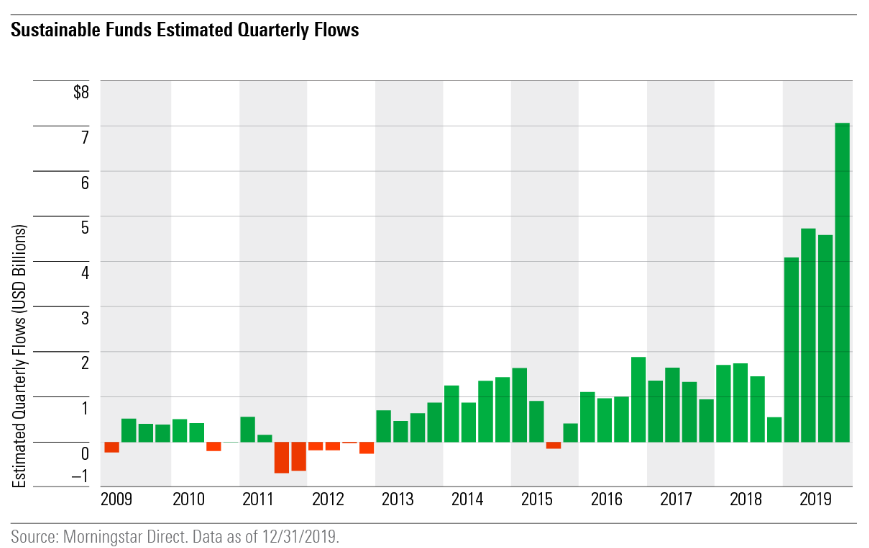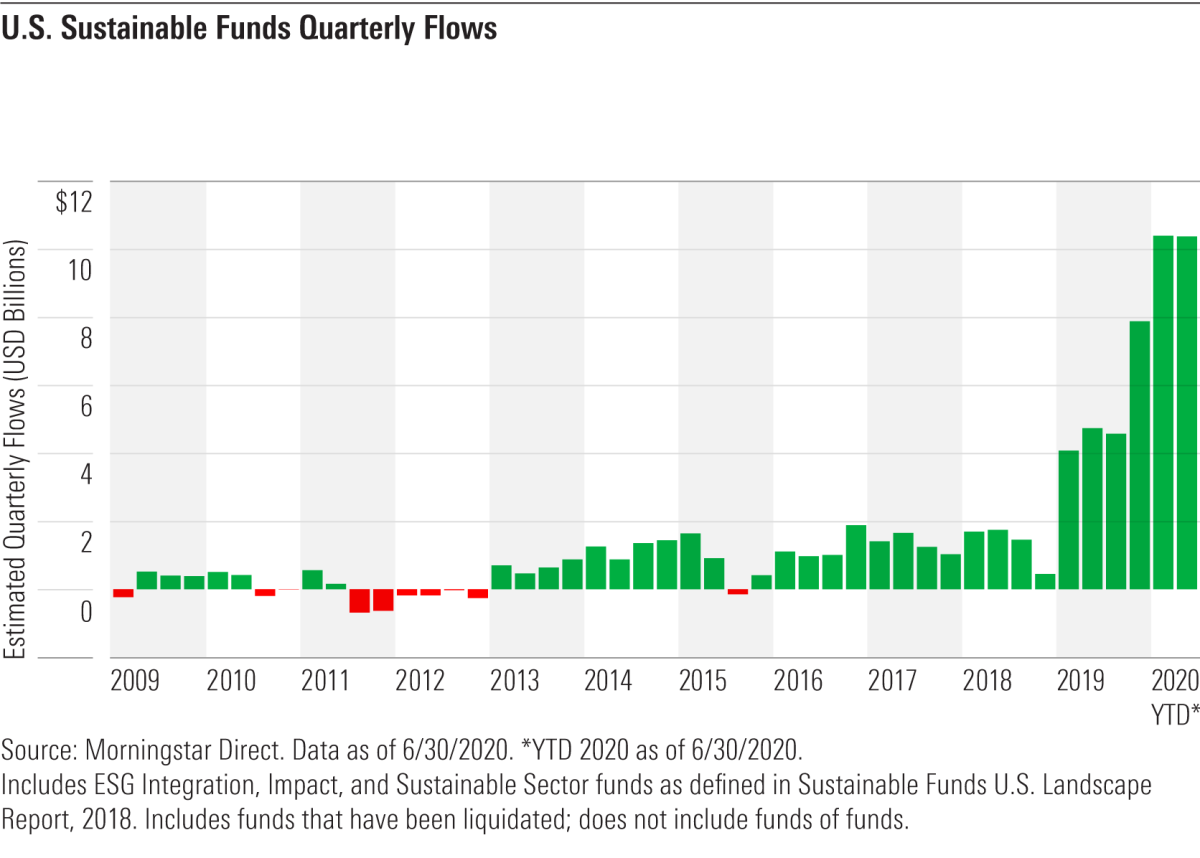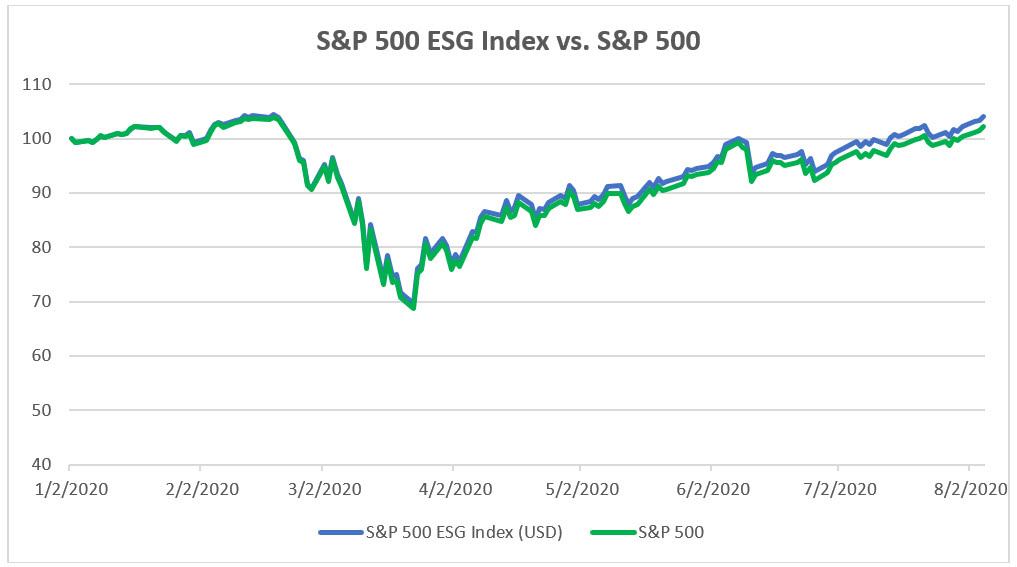There’s no denying we’re dwelling in a unprecedented time. The COVID-19 pandemic has had main implications for shoppers, companies, governments, and well being care methods around the globe. Within the wake of such uncertainty, traders are prioritizing the power to mitigate ongoing dangers by integrating environmental, social, and governance (ESG) standards into their funding selections, to establish high-quality firms which can be well-positioned for long-term progress.
In the course of the first-quarter downturn, ESG methods demonstrated distinctive resiliency relative to their friends, offering larger draw back safety. This final result has crystallized conviction in ESG merchandise, whereas highlighting their aptitude to carry out throughout all market cycles. So, does this imply we now have reached an inflection level in ESG investing as results of the coronavirus?
Assessing the Preexisting Panorama
To handle this query, we should first consider the ESG panorama previous to the pandemic. Traders’ urge for food for sustainable investments grew over the latter half of the previous decade, largely attributed to rising environmental, social, and company governance issues. From a capital allocation perspective, one in each 4 {dollars} underneath skilled administration within the U.S. employed a socially accountable technique in 2018, as reported by america Discussion board for Sustainable and Accountable Funding (USSIF). This translated to a outstanding complete of $12 trillion initially of 2018, a stark improve from the $8.7 trillion initially of 2016. Sustainable property reached one more file influx in 2019, raking in $20.6 billion of latest property within the U.S. alone. Most notably, the fourth quarter of 2019 attracted extra property than all of 2018 mixed, as proven within the chart beneath.

The continued curiosity and capital allocation commitments to ESG investing have gone properly past what many anticipated to be a short lived fad. Advocates have elevated tangible dangers regarding local weather change, shareholder activism, and equal employment alternatives. Shareholders additionally introduced range and human rights efforts to mild, whereas highlighting the necessity for larger transparency with political spending and lobbyist exercise, as proven beneath.

Supply: USSIF Govt Abstract
Trade leaders have additionally taken a stand. BlackRock’s Larry Fink addressed the severity of the present local weather disaster in his 2020 letter to CEOs, proclaiming “local weather threat is funding threat.” That’s a reasonably outstanding declaration coming from the CEO of the world’s largest asset supervisor. Fink additionally pledged an ongoing dedication to “placing sustainability on the heart of how we make investments” and that his agency would make a degree to eschew firms that introduced a excessive sustainability-related threat. Moreover, the 2020 World Financial Discussion board harnessed the theme of sustainability to deal with the severity of environmental affairs among the many world’s foremost enterprise, political, and cultural leaders.
With demand stronger than ever, many corporations have chosen to launch their very own ESG mutual fund or ETF merchandise, together with Goldman Sachs, BlackRock, and State Avenue International Advisors. In response to Morningstar information, this explosion of ESG funds totaled simply shy of 600 funds, or about $900 billion in property underneath administration in 2019. Upon additional evaluation, traders have indicated a transparent choice for passive methods relative to lively, with ETFs capturing a majority (60 %) of sustainable flows in 2019—sometimes in low-cost merchandise (e.g., iShares and Vanguard).
Now that we’ve unpacked the state of sustainable investing and ESG methods previous to the coronavirus, let’s dive into 2020 and the developments we’re presently seeing within the area.
2020: A Turning Level for ESG Investing?
Sustainable investing skilled a prolific uptick of quarterly flows within the first half of 2020, as proven within the chart beneath. Largely, this growth might be attributed to the stark actuality the coronavirus forged on many firms, which have been pressured to enact contingency plans and put worker administration techniques to the check. In the meantime, shoppers crafted their very own conclusions on the businesses they routinely entrust with their capital, assessing their underlying operations on this disheveling interval.

The coronavirus has critically broadened traders’ views in relation to sustainable investing, graduating from a mere values-based strategy to a viable method of investing in high-quality firms poised for long-term progress, usually with much less unstable earnings. In consequence, traders are beginning to see the chance mitigation benefits, studying to keep away from firms that don’t combine ESG practices, given they’re seemingly poised for larger monetary threat. Analysis by the CFA Institute helps this concept, revealing that firms with strong ESG metrics are inclined to exhibit increased profitability and stronger steadiness sheets—in the end rendering larger sturdiness to climate durations of market stress.
However What About Efficiency?
When assessing efficiency—a typical barrier to entry for a lot of skeptics—ESG funds truly outperformed their respective peer teams through the first two quarters of the yr. In response to Jon Hale, director of sustainable investing at Morningstar, “65 % of ESG (fairness) funds outperformed their friends, with greater than twice as many ending of their class’s prime quartile than within the backside quartile.”
Moreover, this era has demonstrated the power for ESG index funds to supply larger draw back safety than their non-ESG index counterparts. As evidenced beneath, the S&P 500 ESG Index outperformed the normal S&P 500 benchmark by 3 % year-to-date. Analysis by BlackRock additional revealed the power for sustainable merchandise to ship higher risk-adjusted efficiency, with 94 % of sustainable indices outperforming their mother or father benchmarks within the first quarter. As we are able to see, the information additional solidifies that ESG integration can in actual fact result in aggressive, if not superior, efficiency.

Supply: SPDJI
Nonetheless within the Early Phases
Demand for sustainable investments (and asset flows!) has exponentially amplified all through the course of the yr; nevertheless, it’s too quickly to conclude whether or not the coronavirus has precipitated an inflection level within the area. The truth is, we’re nonetheless within the early levels of embracing all that ESG investing has to supply. There may be actually room for enhancements, by way of information availability and fostering common adoption. However there’s little doubt we are going to proceed to witness the benefits of this strategy to investing for years to return.
Environmental, social, and governance investing entails the exclusion of sure securities for nonfinancial causes. Ahead-looking statements usually are not ensures of future efficiency and contain sure dangers and uncertainties, that are troublesome to foretell. There isn’t any assure that any investing purpose can be met.
The S&P 500 ESG Index is a broad-based, market-cap-weighted index that’s designed to measure the efficiency of securities assembly sustainability standards whereas sustaining related general business group weights because the S&P 500.
Editor’s Word: The authentic model of this text appeared on the Impartial Market Observer.


